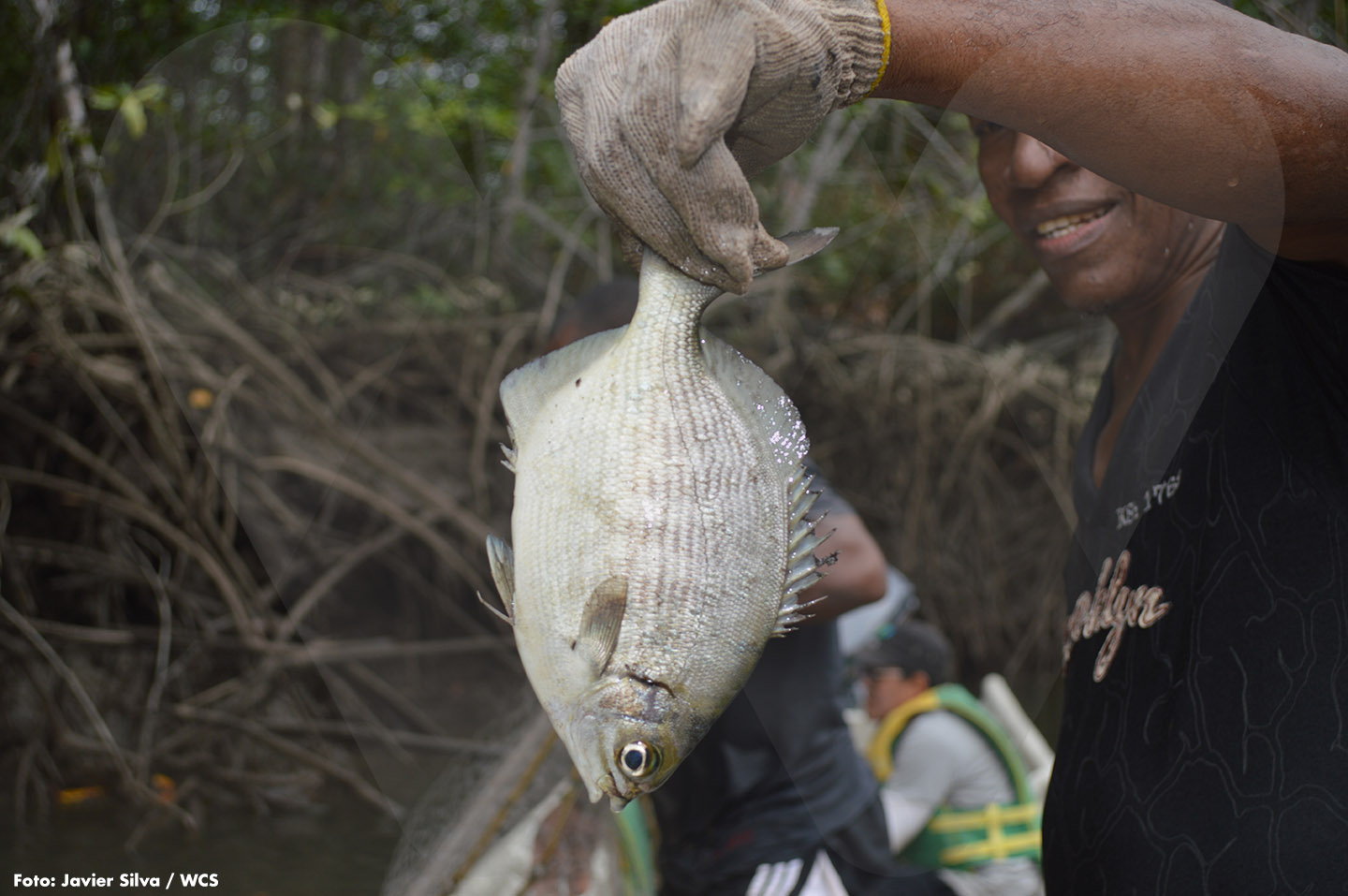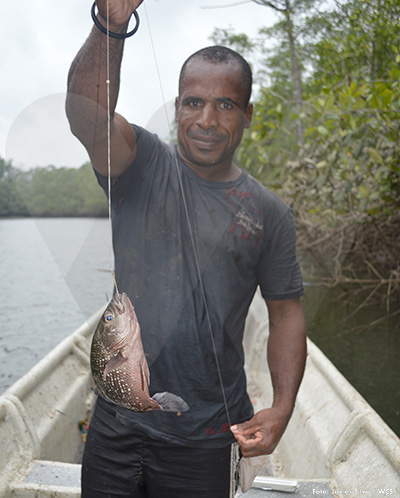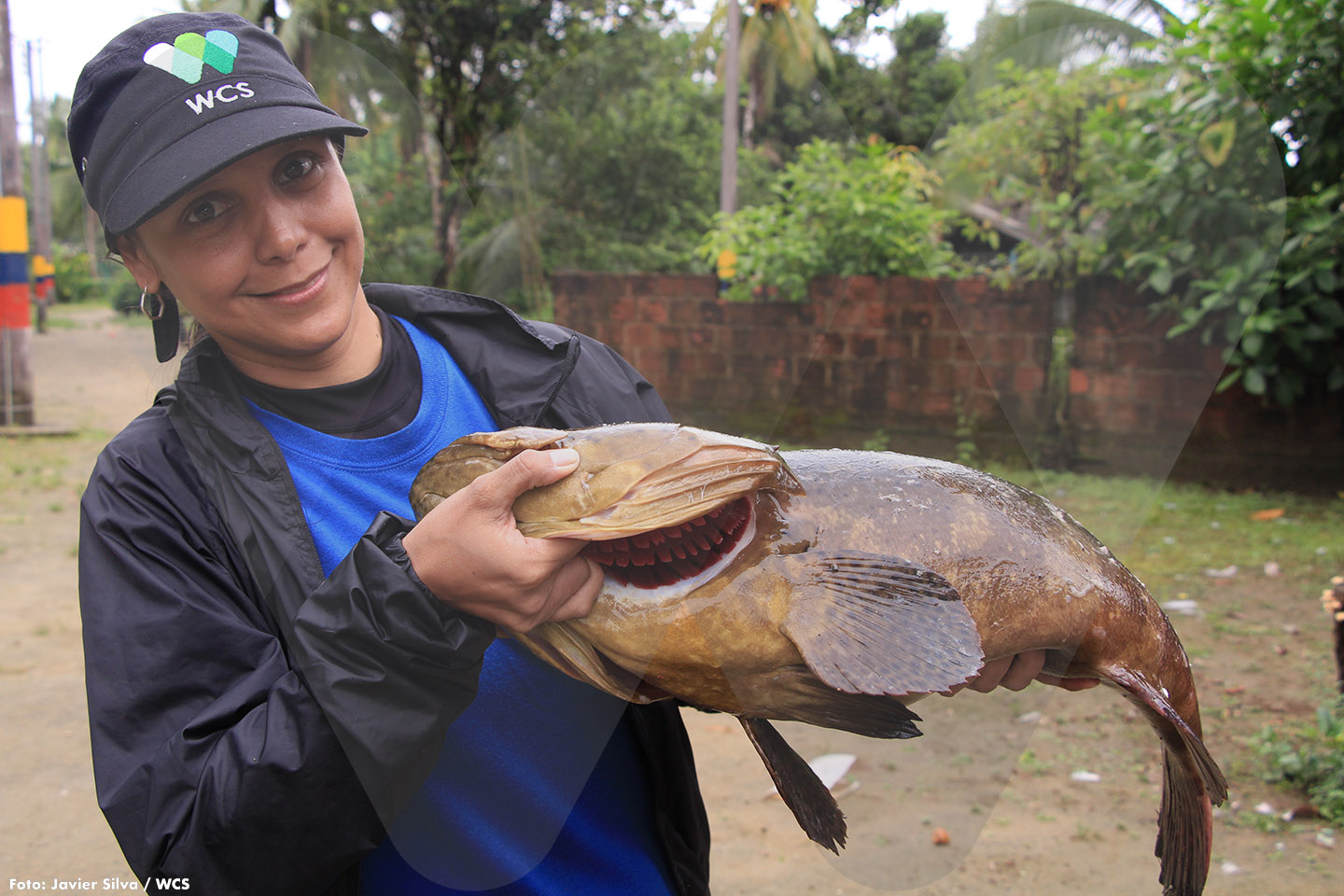Regulate the use of marine resources, vital priority for the “Encanto de los Manglares del Bajo Baudó”

Communities are concerned because species that were abundant before are not seen anymore. WCS Colombia, teamed with the Concosta Community Council, leads a participatory fishing monitoring within the framework of the Management Plan of this Integrated Management Regional District, to implement measures for the reduction of pressures on resources and ecosystems.
Fishing is the most important activity for the communities that live in the Integrated Management Regional District “Encanto de los Manglares del Bajo Baudó”, a protected zone created in 2017 and officially launched as a conservation area in May 2019.
But, regardless of it being a crucial activity for the locals’ subsistence, the management of marine resources by this region of Chocó is not perfect. Despite the enormous biodiversity, or maybe because, due to its richness, it is considered endless, communities have tolerated unsustainable fishing activities and are unaware of the value of some species.
However, all the above is compensated by the inhabitants’ overpowering interest in correcting those inadequate activities and substituting them for environmentally responsible ones.
Nets with small mesh
A first concern among the people is the scarcity of some species that, years ago, were abundant. For example, this is true of the ‘mulatillo’ snapper (Lutajus jordani), today hardly seen. The same happens with the bull shark (Carcharhinus leucas), species catalogued as ‘Near Threatened’ by the International Union for Conservation of Nature (IUCN); juveniles are being captured with nets and with hooks, especially in those places where the rivers flow into the sea (estuaries).

Something similar happens with the groupers, big fish, very important locally for consumption and commercialization, but fished when they still have a small size. And the largetooth sawfish (Pristis pristis), critically endangered rays, face an even direr situation. Of them, only the stories in the memory of the fishermen remain; they are now almost a legend.
Fishermen in this area use different fishing gear, from shrimp gillnets to longlines and handlines, as well as cast nets for the capture of bait.
But some of these fishing gear, like the nets, sometimes have a very small mesh that captures animals before they reach their maturity size or age. Gillnets have been used in estuaries and there is even a practice used to capture snappers (mainly "mulatillo") that consists of tying gillnets over the mangrove roots (practice known as "changuando").
“Information to support management measures for marine fish is very limited and there is an unawareness of the effects of fishing gear on the resources they capture, which inhibits decision making and action in connection with diversification or substitution of fishing gear for more sustainable ones in environmental and food security terms”, explains Paola A. Mejía, head of the marine component in WCS Colombia.
As a matter of fact, these problems are being considered during the fishing monitoring carried out on board vessels and on landings by WCS Colombia and the Concosta Community Council, expecting to generate input to implement actions defined in the Management Plan of the Integrated Management Regional District that lead to a reduction of those pressures.
Species of interest
In the past few months, researchers have analyzed species of interest for the community due to their ecological, economic and food security value. The following were included: corvina, the above-mentioned grouper, tripletail, longspine snook, blackfin snook and several species of snappers, sharks and rays. Their reproductive traits are now being evaluated to provide the Community Council with information that will enable it to suggest measures for their management.

Moreover, the generation of all this information will help inhabitants to change their perception of some animals that are wrongly considered dangerous, leading fishermen to take unjustified and extreme action against them. This happens, for example, with several species of sharks that are killed because it is generally believed that they attack and eat humans. Fishermen also cut off the tail of stingrays to avoid accidents with the spine, even having no interest in using them.
“These attitudes require educational actions that will prompt the community to understand the reality of the biodiversity that surrounds it”, explained Paola A. Mejía.
But there is already encouraging progress in the management of fishing resources in the protected area. To begin with, agreements reached with the community for a sustainable use, such as not fishing with gillnets in the river mouths and estuaries; thus, fishing only with hooks and castnets is allowed in these zones.
It was also agreed that large-scale shrimp fisheries will work beyond two miles from shore. Given the importance of the rocky coastline ecosystem in this protected area, fishing a fourth of a mile from shore will not be permitted in the northern zone of the Integrated Management Regional District (from Cabo Corrientes to Cuevita).
“For the compliance with these agreements, the Integrated Management Regional District will have a surveillance and control program that will enable the environmental authority (Codechocó) to enforce actions with communities and control institutions and develop different prevention activities for the knowledge and appropriation of the territory by the community”, added Paola A. Mejía. “Here” – emphasized the researcher - “the challenge is for the communities to become responsible users and, at the same time, guardians of their own territory.”
With this in mind, and as an additional incentive included in the Management Plan of the area, the purpose is the promotion of the fishing activity, the opening of markets and new infrastructure for the development of value chains, the latter taking advantage of the zone’s strategic position for its commercialization at a national level.
The fishing monitoring, initiated in March 2019, jointly with the Concosta Community Council and Codechocó and developed with the participation of Concosta women and fishermen, will enable the assessment of the variability of fishing resources, the repercussions of each fishing gear and the reproductive cycle of the prioritized species.